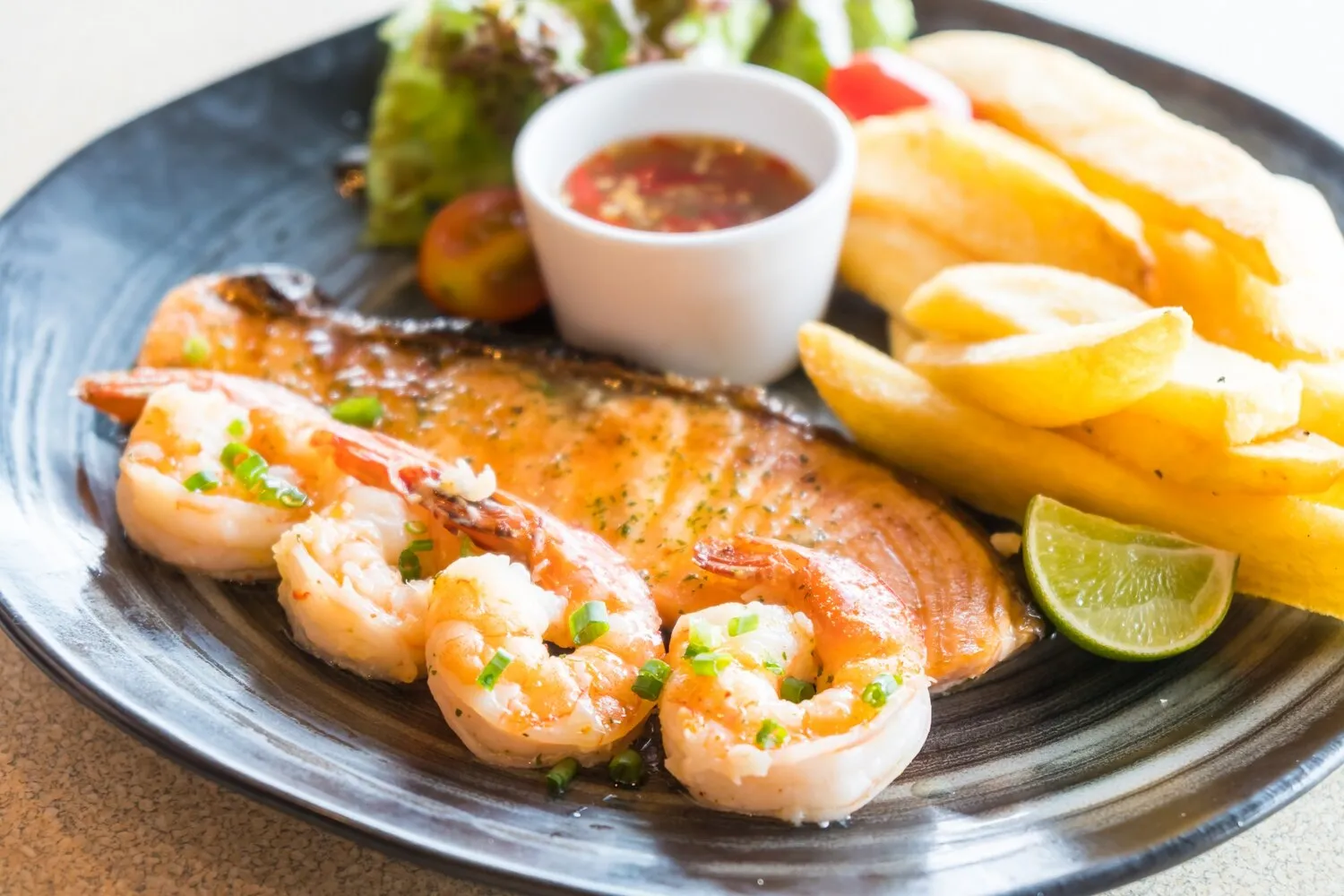
Seafood Dishes
Based on the restaurant's name and cuisine, expect a variety of seafood dishes, potentially including grilled fish, shrimp dishes, and other preparations of local seafood.
Nutrition Facts
* The % Daily Value (DV) tells you how much a nutrient in a serving of food contributes to a daily diet. 2,000 calories a day is used for general nutrition advice.
A Mukeka
Seafood dishes boast a rich history, deeply intertwined with coastal communities and maritime cultures worldwide. From ancient fishing practices to sophisticated aquaculture, human interaction with the sea has resulted in diverse culinary traditions, each reflecting local ingredients and preparation techniques. Trade routes have also significantly influenced the spread of seafood dishes and cooking styles across continents.
Seafood dishes hold immense cultural significance in many coastal communities around the world. They often play a central role in celebrations, rituals, and daily life, reflecting a deep connection to the ocean and its bounty.
Festivals
Many coastal towns host seafood festivals to celebrate the local catch and culinary traditions. These festivals often feature live cooking demonstrations, seafood eating contests, and cultural performances.
Religious Significance
In some cultures, specific seafood dishes are associated with religious or spiritual practices. For instance, certain types of fish might be consumed during specific holidays or festivals.
Sustainable Practices
The culture around seafood also includes growing awareness and efforts toward sustainable fishing practices to protect marine ecosystems and ensure the availability of seafood for future generations.
Seafood dishes are characterized by a diverse range of flavors, from the delicate sweetness of scallops to the briny intensity of oysters. The flavors are often enhanced by accompanying ingredients and cooking methods, creating a symphony of tastes and textures.
The flavors in seafood dishes range widely depending on the type of seafood used and the preparation method. Common flavor profiles include: briny (oysters, clams), sweet (crab, lobster, shrimp), delicate (flounder, sole), savory (tuna, salmon). Ingredients like lemon, garlic, herbs (dill, parsley, thyme), chili peppers, and soy sauce are frequently used to complement and enhance the natural flavors of seafood. Cooking methods such as grilling, frying, steaming, baking, and poaching also significantly impact the final flavor.
Freshness is Key
Always choose the freshest seafood available. Look for clear eyes, firm flesh, and a fresh, sea-like smell. Avoid seafood that smells fishy or ammonia-like.
Don't Overcook
Seafood tends to cook quickly, so be careful not to overcook it. Overcooked seafood can become dry, rubbery, and lose its flavor. Use a thermometer to ensure proper doneness or cook until just opaque.
Proper Storage
Store seafood properly in the refrigerator to maintain its freshness. Place it on ice or in a sealed container to prevent it from drying out. Consume seafood within 1-2 days of purchase.
Descaling
Descaling a fish is an essential step for many seafood recipes. Use a descaler tool or the back of a knife to scrape the scales away from the tail towards the head. Rinse the fish thoroughly after descaling.
Explore additional Various dishes and restaurants
Explore VariousDiscover top dining spots and culinary experiences in Feira de Santana.
Explore Feira de SantanaLearn more about the food culture, restaurant scene, and culinary heritage of Brazil.
Explore Brazil